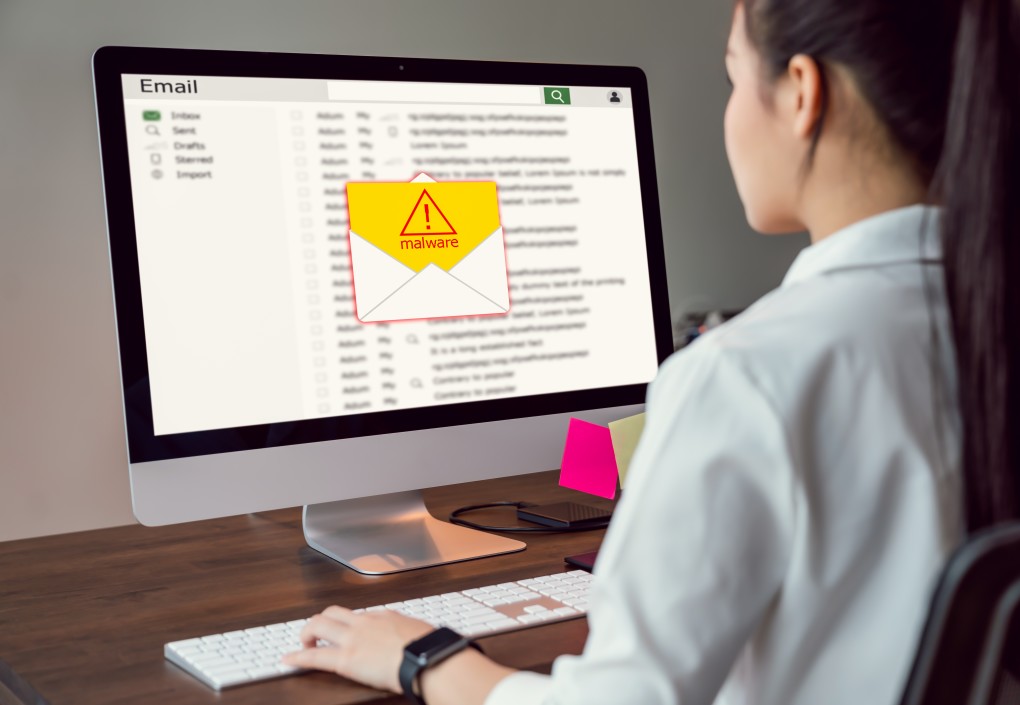Email Marketing Open Rates: The Complete Guide!
How can you measure the success of your email marketing campaigns?
Chances are you measure by the number of people who open your email (email open rate) and the number of subscribers who click on a link (click-through rate).
That’s how we used to measure it.
And while there is actually nothing wrong with that, what gets overlooked is that your click-through rate entirely depends on your open rate, because unless people open your email, there is no chance they can click on it!
Therefore, to get a better click-through rate, you need people to open your email.
So, how can you get more people to open your email?
Keep reading our blog post to find how!
What is an email marketing open rate?
An email marketing open rate is the percentage of subscribers that open a specific email out of your total number of subscribers.

The email marketing open rate often shows how well you were able to catch a subscriber’s attention with your subject line or whether your emails reached their inbox or went to the spam folder.
Most leading Email Service Providers (ESP) will automatically calculate your email marketing open rates, so you don’t need to manually do it. You can see this metric right on the main reporting page for particular email campaigns, so you can decide if you need to take any actions to improve your performance.
But if you still want to calculate your email marketing open rate by yourself, you should move to our next section.
How to calculate your email marketing open rate?
Here’s how your email marketing open rate is calculated:
Email Marketing Open Rate = Unique Opens / (Number of Emails Sent - Number of Bounces)
For instance, if you send 1000 emails, and 100 of them bounce, this leaves you with 900 delivered emails. Of those 900 emails, let’s say 200 are opened. This means:
Your email marketing open rate = 200 / (1000 - 100) = 22%
Sometimes your emails never get opened because they don’t make it to your audience’s inbox in the first place. Emails can bounce due to a number of reasons, such as an invalid user, invalid domain name, permanent bounce backs, and so on. As a result, some ESPs calculate open rates by excluding the number of emails that bounce from an Internet Service Provider (ISP).
Why should you care about your email marketing open rate?
If you’re reading this blog post, you’re very likely an email marketer or are somehow related to an email marketing campaign. And your main goal must be to increase your subscriber list, reach out to a larger audience, and eventually get a better result on your email marketing campaign.
Just having a huge number of contacts in your subscriber list doesn’t guarantee success. The success of your own email marketing campaign is dependent on a lot of things, including your open rates. If your content isn’t received and opened by your subscribers, your campaign is not doing much.
This is why you should care much about your email open rates and work on boosting them. There are several steps that you can take to improve your email open rates and reach as many followers as possible. We will show you later!
What is a good email marketing open rate?
Apart from showing you how well your email marketing campaign is performing against its KPIs. The average open rates for emails can also tell you how you stack up against your competitors.
Benchmark data can display how your results compare to the average email open rates in your industry. Is your email open rate below, above, or on par with the industry average? This can actually provide some indication of the direction that you need to take to improve your future results.
A reports that an average email open rate of 15%-25% generally indicated campaign success. The average open rate across all industries in 2020 was 18%.
According to Constant Contact and Smart Insights, the average email open rate across all industries was slightly lower at 16.06% (as of December 2020).
As a matter of fact, email open rates tend to vary for different industries.
Below are the average email open rates by industry according to Constant Contact’s study:
| Industry | Email Open Rate (Total) |
|---|---|
| Accommodations | 17.29% |
| Accountant | 16.94% |
| Animal Services | 21.23% |
| Art, Culture, Entertainment | 17.79% |
| Automotive Services | 9.72% |
| Child Care Services | 22.99% |
| Civic/ Social Membership | 12.63% |
| Consultant, Training | 11.38% |
| Education - Primary/ Secondary | 28.44% |
| Education - Higher Education | 19.55% |
| Financial Advisor | 12.26% |
| Fitness Center, Sports, Recreation | 17.48% |
| Fitness/ Nutritional Services | 12.73% |
| Government Agency or Services | 28.22% |
| Health & Social Services | 21.84% |
| Health Professional | 16.60% |
| Home & Building Services | 19.59% |
| Insurance | 16.69% |
| Legal Services | 17.80% |
| Manufacturing and Distribution | 14.29% |
| Marketing, Advertising, Public Relations | 12.40% |
| Personal Services | 16.70% |
| Professional Services | 14.30% |
| Publishing | 15.51% |
| Real Estate | 13.42% |
| Religious Organization | 29.42% |
| Restaurant, Bar, Cafe, Caterer | 14.71% |
| Retail | 11.04% |
| Salon, Spa, Barber | 14.26% |
| Technology | 12.44% |
| Transportation | 13.97% |
| Travel and Tourism | 15.02% |
| Other | 12.13% |
| Other - Nonprofit | 21.62% |
And the average email open rates for specific industries in 2020 were:
| Industry | Email Open Rate (Total) |
|---|---|
| Advertising & Marketing Agencies | 18.5% |
| Agriculture, Forestry, Fishing & Hunting | 23.2% |
| Consumer Packaged Goods | 18.1% |
| Education | 24.9% |
| Financial Services | 24.8% |
| Food & Beverages | 15.2% |
| Government & Politics | 26.7% |
| Healthcare Services | 23.4% |
| IT/ Tech/ Software Services | 19.5% |
| Logistics & Wholesale | 22.7% |
| Media, Entertainment, & Publishing | 20.8% |
| Nonprofit | 25.5% |
| Other | 17.8% |
| Professional Services | 18.3% |
| Real Estate, Design & Construction Activities | 19.7% |
| Retail | 12.6% |
| Travel, Hospitality & Leisure | 17.7% |
| Wellness & Fitness | 21.6% |
In spite of these variances, there are several broad trends in email open rates that endure across all industries:
- As the size of the subscriber list increases, the email open rate often falls
- Organizations that focus on enthusiasts and supports (i.e., sports teams) often see higher open rates
- Emails on more specific niche topics often have higher open rates than emails on broader topics
Depending on your own industry, it can be helpful to compare your average email marketing open rate to these benchmarks. By doing so, you can understand what works best with your audience, identify gaps in your email marketing strategy, and make the necessary modifications to your segmentation tactics, template copy, design, frequency, send times, etc.
4 Reasons why your email marketing open rate is low
You may find that your email marketing open rate is way lower than the industry average. If that is the case, you might have a problem that needs addressing.
Below are 4 reasons why your email marketing open rates may be lower than they should be:
-
Unqualified subscribers. If you purchased an email list, you could expect your open rates below the industry average. So, never, ever purchase an email list! The same will go for lists that were acquired without properly qualifying subscribers.
-
Not carefully segmenting your list. If you deliver the same email to all subscribers on your list, you will never get the kind of engagement you are looking for.
-
Numerous inactive subscribers. If you have a number of people on your list who are inactive and have not engaged with your marketing emails for a long time, that will badly hurt your inbox deliverability, and as a result, your open rates will plummet.
-
Boring email headlines. If you really want to boost your email open rates, you’ve got to focus on creating enticing and converting email headlines.
These are the main reasons why your email open rates may be low. So, to solve these problems for good, you should keep reading our post!
11 tips to improve your email marketing open rates
1. Qualify your subscribers
While it seems like a good idea to get as many subscribers as possible, it is actually not. If you get subscribers who aren’t remotely interested in your content, it will reduce your overall engagement and open rates.
So, make sure you qualify your subscribers before they really join your email list by using a relevant lead magnet. A lead magnet is often a free item or service given away to collect contact details; for example, lead magnets can be samples, trial subscriptions, white papers, e-newsletters, and free consultations.

Instead of using anything that catches the attention of everyone - for instance, a giveaway for a $100 coupon - you should use something that catches the attention of your target customers, like a free sample of your product.
Your ultimate goal is an active email list filled with quality leads. So, a small list that is engaged is so much better than an extensive list that doesn’t care much about you or what you’re offering.
2. Segment your subscriber list
Email list segmentation is the process of dividing your subscribers into smaller groups according to a number of categories, such as geographical area, purchase history, interests, and more.
Segmenting your subscriber list makes it easier to send your contacts content that is actually relevant and useful to them, which will eventually boost your email open rates. Many people who run email marketing campaigns send their emails to every contact on their list, and this lazy method does more harm than good.
If you know that segmenting your email list can lead to a 14.31% increase in your open rates, you’ll find really no reason not to segment your email list.
For instance, if you’re doing a localized promotion with a specific geographical area - say California, use your segmented email list to look for contacts who reside in California and send them and only them an email about your promotion. Doing this allows your contacts to be more engaged with your campaigns and avoid spamming their inboxes with irrelevant emails.
Related posts:
- 5 Most-used Customer Segments in Emails
- 16 Proven Tips to Increase Your Email Open Rate
- 5 Types of Market Segmentation
3. Personalize your emails
Personalized content works far more effectively than non-personalized; and when it comes to email open rates, emails with personalized headlines are 26% more likely to be opened.
In fact, there’s more to personalization than just putting someone’s name in the headline. Personalization is not about showing off how much you know about a customer - it’s about crafting an email that can serve them, and them specifically.

Below are some personalized types of emails that your subscribers will want to open:
- Happy birthday emails, or emails on the anniversary of the subscriber’s first purchase
- Updates on VIP and loyalty rewards status
- Guides for an item they purchased
- Recommended products based on their purchase history
- Follow-ups on a purchase to check in how they like it, offer support, and ask for a review
There’s a lot of motivation to take this extra step with your marketing emails - studies have shown that personalized emails based on past customer behavior have 25% higher open rates and 51% higher unique click rates.
4. Use your email headlines effectively
One part of using your email headline effectively is targeting your intended recipient personally.
Plus, using headlines that are direct and to the point is one efficient method you can optimize. You should tell your subscribers exactly what to expect in your email, and they open it because that is something they really want. For instance, “ How to Double the Number of Subscribers in a Week” is a direct headline.
On the other hand, a curiosity headline entices people to open because they’re curious to know what is inside the email. For example, “We can’t believe this just happened…” is a curiosity headline.
The point is you should maximize the effectiveness of your email headline. Instead of sticking to just one of the methods above, you should rotate between a few as needed and keep things fresh. By doing so, you can keep things interesting and ensure your subscribers open more of your emails.
For more email headline ideas, keep reading our following topics:
- 99 Tempting Email Subject Lines for Spring Season
- 33 Holiday Email Subject Lines
- 33 Best Thanksgiving Email Subject Lines
- 32 Best Halloween Email Subject Lines
5. Consider the time
The ideal scenario is that your emails will arrive in customer inboxes right as customers are ready to read them. But the challenge is that everyone is different, and personal preferences play an essential role in how and when your emails are opened and read.
So, the best you can do is observe the available research as well as take into consideration any demographic factors that can make your core customers unique.

Some studies report that Tuesday is the best option, followed by Thursday (helpful if you’re sending two emails a week). For time, 10 a.m is considered the best time to send emails, followed by 8 p.m.
For a detailed, read our guide on the best time to send marketing emails.
6. Clean your email list
As an email marketer, you should clearly know that having inactive contacts on your email list will hurt your deliverability score. A surefire way to increase your open rates is clean your email list.
You can monitor inactive contacts for a certain period of time - say 3 to 6 months - so that you don’t purge subscribers who are just temporarily unavailable. If they don’t engage with any of your emails over a long time, there’s no benefit to keeping them on your list.
Don’t forget to send a win-back email campaign to attempt to re-engage them. If they don’t re-engage with you, you will need to move them out of your email list.
Related topic: 10 Best Email List Management Tools
7. Optimize your email headlines for mobile
Two-thirds of emails are actually opened on mobile devices - so it’s essential to take screen size into account when you are crafting headlines.
In addition to following the guidelines for headlines mentioned above, you also need to keep your headlines relatively brief so that they’re visible on mobile devices at first glance. Studies show that 7 words/ 41 characters is the optimum figure that you should aim for.

While optimizing your headlines for mobile screens is vital, it is just one step in ensuring your content is successful in mobile formats. Reduced screen size will impact other aspects of email content, including the legibility of your text, how images are shown, and how much of your “From:” field as well as preview text is visible.
Moreover, email habits among mobile users are distinct from people who use their desktop computers to read emails. For instance, mobile users are more likely to check their email first in the morning and late at night.
Typically, when it comes to mobile, smaller and shorter becomes better:
- Again, aim for headlines is 7 words/ 41 characters
- Front-load your own preview text so that the most vital information appears within the first few words of your copy
- Stick with just one column for your content, and don’t forget that screen widths vary widely across mobile devices. Content width between 450 to 600 pixels often works with most screens.
- Place your call-to-action and the most important supporting information as close to the top as possible
- One exception to the “smaller and shorter becomes better” maxim: keep the text large. You will want to set your mail body copy at a minimum of 16 pixels to guarantee legibility across all mobile devices.
If you do not optimize your email for mobile devices, your subscribers who use mobiles as their primary device for checking emails will be unhappy with your content and more likely to stop reading it.
8. Use the “From:” field effectively
If your recipient does not recognize who has sent the email, the chances of them deleting it immediately, or worse, reporting it as spam is higher than usual. To avoid that tragedy, utilize your “From:” field to its maximum.
So, include your individual name or brand name, so that it’s immediately recognizable to your audience.
9. Avoid spam filters

Your subscribers cannot open your emails if they never see them - and that scenario can happen if your emails bypass their inboxes and go directly to spam. Many of the recommendations contained in this post are fine-tuned to help you spam filters. Below are a few more tips to keep your email deliverability rates healthy.
-
Avoid spam trigger words. If a word or phrase looks spammy to you, it will feel that way to your customers too - and it is also likely to trigger automatic spam filters. So, it’s best to avoid common trigger words and phrases, such as “cheap,” “$$$,” “incredible deal,” and “order now.”
-
Avoid ALL CAPS in headlines. There are actually more effective ways to convey urgency than resorting to all caps. Keep in mind that all caps headlines are 30% less likely to receive a response than all other headlines.
-
Don’t use bait-and-switch. If clarity and directness are your best bet for headline success, being tricky or misleading might be the worst. It might be tempting to employ some misdirection in your attempt to evoke curiosity. The issue arises when your subscriber clicks through and finds that the email’s content is drastically different from what they were expecting. This can cultivate a feeling that the subscriber shouldn’t trust you, especially given that bait-and-switch advertising is usually employed in scams.
10. Abide by all email marketing laws
To ensure high email marketing open rates, you must abide by CAN-SPAM rules (U.S) and your opt-in process complies with GDPR (Europe).
For CAN-SPAM compliance, don’t forget to follow these rules at all times:
- Provide a clear way to unsubscribe from every email
- Use “From:” “To:” and “Reply to:” addresses
- Avoid sender names like “company.com” or “no-reply.com”
- Never transfer or sell email addresses to another list
- Include your valid physical postal address in every email
If your subscribers live in Europe, you should comply with GDPR and boost your email marketing open rates by strictly following one key guideline: include an opt-in that is not already checked in. Give them the obvious option to opt into your emails themselves.
Related post: Permission-based Email Marketing: The Ultimate Guide
11. Use A/B testing to your advantage
Studies found that headlines are the most frequently tested email element, followed by the message body itself, layout, and images. You can use A/B testing email to try out new strategies and compare how specific types of headlines perform against others.
For instance, you may want to get a sense of how a direct headline will fare when matched against a headline that is designed to evoke curiosity. Alternately, you may want to test a more impersonal, aggressive sales pitch that matches up against email content that is more casual or personalized.
Then, you can send each version of your email to a small segment of your subscriber list. You will want to give your test at least 48 hours to generate meaningful results (remember that the smaller your list segments, the longer it may take).
The bottom line
There are numerous reasons why email marketers obsess about the open rates of their campaigns. After all, if your email doesn’t get opened, there’s little chance that a subscriber will click on anything inside it!
If you haven’t really thought about your email open rates in the past, now is an excellent time to start. Certainly, if something is already working well for you, keep doing more of it. However, if not, use email open rates as a starting point to think about new strategies and to re-align your email marketing approach.
Do bookmark this blog post and use it as a ready reckoner to boost your email marketing open rates. But if you are not sure how to get started, AVADA Email Marketing Automation can help! The platform can help you create awesome email marketing campaigns that your audience would want to open and engage with! Amazingly, it’s FREE to get started!
New Posts







